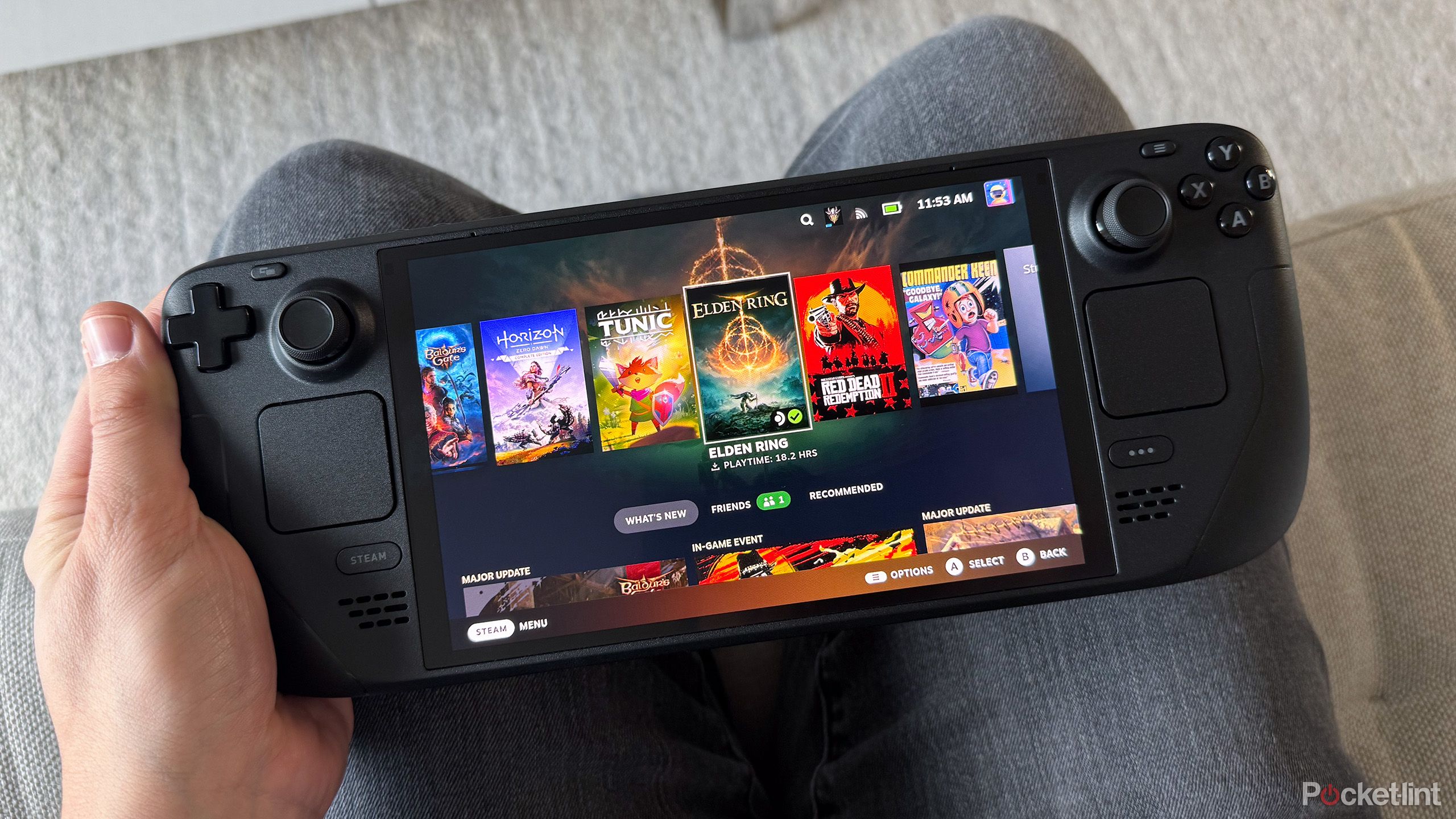Summary
- The Nintendo Switch 2 is mostly a spec-improvement over the Switch, but the Joy-Con 2’s mouse functionality is meaningfully different.
- Mouse controls make it easier to control complex games and could be used to make it easier to port PC games.
- The convergence between PC and console gaming is increasing and Nintendo is just one example.
The Nintendo Switch 2 is many things, but most clearly it’s a safe bet. The console / handheld hybrid has a similar design to Nintendo’s original, ultra-popular Switch, and it can play nearly all the same games. The only obvious difference is that it’s more powerful, with a new Nvidia chip that can push 4K graphics, higher frame rates and a 120Hz refresh rate when you’re looking at the larger, 7.9-inch built-in screen. For most people, that could be the whole story — if you’re willing to ignore the new mouse functionality that Nintendo implemented into the Joy-Con 2. The new controllers can be turned on their side and dragged along a flat surface almost exactly like you would a mouse, letting you use a pointer in games that require precise control. The company’s even come up with a new game called Drag X Drive that’s specifically meant to use two Joy-Con controllers in “mouse mode” at the same time.
Assuming Drag X Drive is good, the game could serve as a further reminder of Nintendo’s ingenuity, but mouse controls as a whole speak to a trend that’s consumed all the console makers: PC gaming. Sure, PlayStation is intent on selling powerful, expensive hardware and games, Microsoft is slowly trying to pivot into being a software platform that occasionally sells hardware, and Nintendo is more or less sticking to the same strategy as PlayStation, but portable. But each company clearly believes PC gaming presents an untapped opportunity. One way or another, all of these platforms are slowly coming together.

Related
Nintendo Switch 2 is a rare sequel that’s better than the original
The OG Switch was a game changer, but the Switch 2 is even better.
Mouse controls are surprisingly fine-tuned
A Joy-Con is as comfortable as a real mouse, but it works
Nintendo barely calls attention to the mouse controls on the Switch 2, to the point that you likely wouldn’t know they’re there unless you accidently started using a Joy-Con 2 on its side or bought a game that supports the new control method. There’s a simple toggle for them in the Settings menu and that’s about it. That might be because when the controls are toggled on, switching between traditional button controls and mouse controls is seamless, whether you’re in a menu or game with mouse support. You just change the orientation of your Joy-Con 2 and a cursor appears on the screen.
It feels better on a desk than my knees, but I came away convinced that Nintendo is on to something.
Mouse controls work best on a flat surface, but the sensor that Nintendo is using is sensitive enough that you can use your new “mouse” on your lap without too much trouble, either. I was able to play Civilization VII with mouse controls while sitting on my couch and the whole thing felt very natural, particularly when I was using one Joy-Con 2 as a mouse pointer and the other a a way to navigate the map and zoom in and out. Civilization VII can be played with a traditional controller, but the number of menus you have to navigate and units you have to move means making exact selections with a mouse is welcome. It feels better on a desk than my knees, but I came away convinced that Nintendo is on to something.
The worlds of PC and console gaming are bleeding into each other
More games are coming to all platforms and more PCs are starting to look like handhelds
The lines between PC games and console games are increasingly blurry. Plenty of the most popular games support Xbox and DualSense controllers at launch, and Steam’s built-in controller customization options open up even more setups. Valve’s commitment to being as flexible as possible extends to the Steam Deck, too, which includes the typical collection of buttons and triggers, but also two haptic touchpads that can become a mouse or additional buttons. At the same time as PC games and platforms have become more console-like, hardware has started to make a similar transition. The Steam Deck and the other handhelds that followed are a great example.
Users can upload custom control layouts and developers can set a default control method through Valve’s system, too.
Beyond that, console makers are much less committed to keeping their best games completely exclusive to a box that lives under your TV. Microsoft’s Xbox Play Anywhere strategy means that all the company’s first-party games are available on both Xbox and PC, and the company helps some developers facilitate the same. Xbox Cloud Streaming means some formerly PC games can be played with a touchscreen on your phone, too. Even Sony, who typically prefers to keep PlayStation an absolutely premium experience, has made porting games to PC a key part of its strategy. The company might be taking a “very measured, very deliberate approach” but it still regularly brings its tentpole titles over around a year later if it doesn’t release them simultaneously.
Nintendo is a bit of an outlier in that it hasn’t broadly changed its approach in decades, but the pieces of the Switch 2 suggest the company has its sights set on PC players, as well. What is the Switch 2’s new GameChat feature, if not a take on Discord voice chat and screensharing? And then there’s mouse controls, which seem almost deliberately included to give developers more reasons to bring their games to Nintendo’s platform. Something that the steady sales of the Switch 2 will only make more exciting. However conscious it is, most video game companies are taking a much more fluid approach to games. PCs might become more user-friendly before consoles can become as flexible or powerful, but the blending is already happening.
The name of the game is convergence
You’ll eventually be able to play most games everywhere
The Switch 2 makes for an interesting example, because most of the time Nintendo is clearly trying to resist playing under the same rules or expectations as anyone else. Here, with things like mouse controls, the company is trying to make its handheld console a better home for more types of games. It keeps the company competitive, and it brings the wilderness of PC gaming even closer to consoles.











